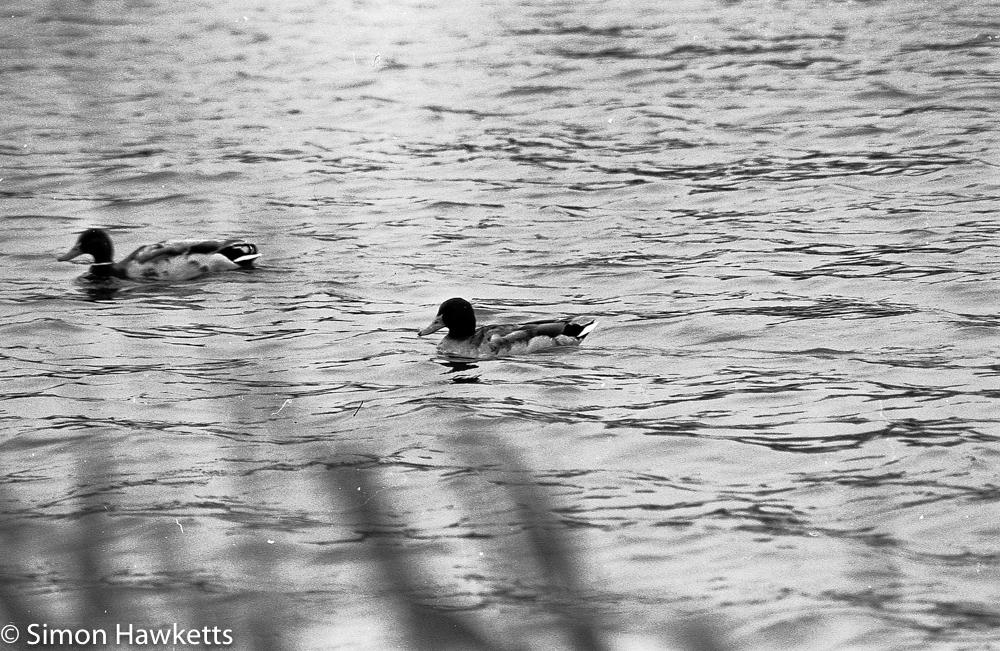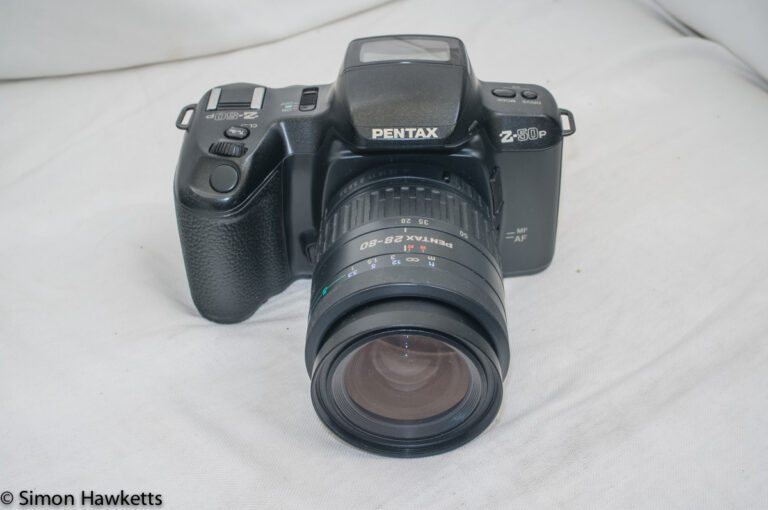Tokina RMC 75 – 260 f/4.5 zoom lens
The Tokina RMC series of lenses was produced in the early 1980s in a variety of different lens mounts as 3rd party alternatives to manufacture’s own lens ranges. The RMC in the name referred to the multi coating used on the lens, Rainbow Multi Coating, and various different focal lengths were made in the RMC series covering a range of prime and zoom options.
I found this Tokina RMC 75 – 260 f/4.5 zoom in the YMCA charity shop in Loughborough with a marked price of £7-99 which included a front lens cap and case. Since it looked clean, the controls all worked smoothly, and it was fitted with a Pentax K mount I bought it as it will fit all my digital cameras either natively or via an adapter, and will also work with my bayonet mount Pentax film cameras.
The lens is a constant aperture, and fixed length zoom by which I mean the set aperture and the physical length of the lens doesn’t change as the lens is zoomed through its focal length. There is a slight increase in length as the focus control is adjusted, but it’s only a few percent. The only controls are the aperture ring which has full stop clicks from f/4.5 to f/22, the focus ring, and a zoom ring which has standard focal lengths marked (i.e. 135, 195 etc) and has a close focus setting when the ring goes below the 75 mm setting. On the front of the lens is an extendible lens hood which although slightly dented on my copy still slides out reasonably easily past the 62 mm filter thread.
Although the lens isn’t particularly fast at f/4.5, it’s a reasonably compact size for a lens which has quite a long focal length when fully zoomed. At its maximum focal length, 260 mm is just over 5x magnification on a 35 mm camera, and is the equivalent of 390 mm on an APS-C crop sensor camera.
Sample Images
In order to take some sample images I used the lens on a couple of cameras and took a walk round the Fairlands Valley park in Stevenage. For digital images I used my Pentax K5 DSLR, which is a logical choice because the lens will fit directly on the camera and balances nicely on the heavier DSLR body.
To get some sample 35 mm film images, I used a Pentax MZ-M manual focus camera, which I find a great camera to use since it allows Aperture Priority AE and being a manual focus camera has a great viewfinder with a split image focusing aid. Admittedly, on this plastic bodied camera the balance was a bit off, but after a while you get used to it. For film, I used some FP4+, since I have a bulk loader loaded with this film which makes it easy to fill a canister with a few frames when you want to test a lens.
Digital Images
The images below were all taken with the Pentax K5 and the Tokina RMC 75 – 260 f/4.5 zoom. The majority were taken between f/4.5 and f/8 and I used most focal lengths during my walk.




























Film Images
I discovered as I took my pictures with the MZ-M, that my bulk loader is not correctly counting frames (or I’m not correctly counting the clicks as I load cartridges). I thought I’d loaded about 15 frames, but the camera ran out much earlier than I thought and after development I found there were only 5 frames which had successfully exposed plus a half frame at the end of the roll. However, just for completeness I’ve included those frames below.






Conclusion
So I’ve used the lens on both film and digital cameras and seen the results, so what do I think of the lens? Well, I’m impressed. Unfortunately I didn’t get a chance to use it much on the MZ-M, but on digital I think it’s turned out to be a bit of a star. The definition seems very good along with the contrast and colour. As it happens there wasn’t a great deal of sun about when I was out with it, so I don’t know how it would react in bright sun in respect to flare, but now I know what a good performer it is I will probably try that.
In use, I found it to be nice to use with good focus control. I found the close focus adjustment at the 75 mm end means you can focus anywhere between the closest focus point, which seems about 5 inches away, up to infinity using the normal focus control as a fine-tuning control when you are in the close ranges.
Anyone who can find one of these lenses for a similar price would be well advised to get it in my opinion.
Discover more from Everything Vintage
Subscribe to get the latest posts sent to your email.



